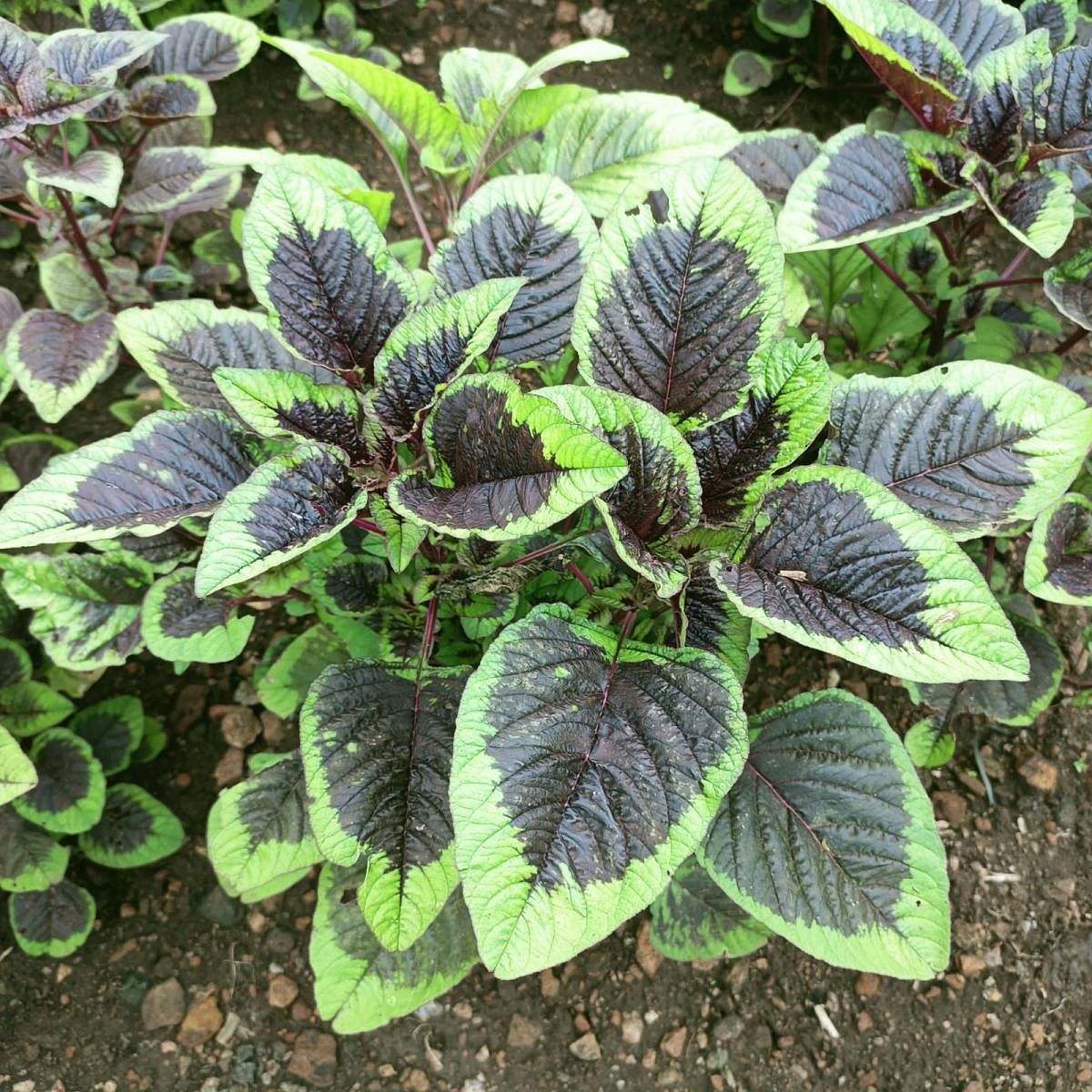


Nagamma, dressed in a bright pink saree, hurries towards Srinivas’ farm excitedly. She is awed by the riot of different hues of red, purple and green covering the field. Srinivas welcomes visitors like Nagamma to his farm in Ramenahalli village in H D Kote taluk, Mysuru district enthusiastically. Here, he describes the 30 different varieties of the amaranth crop, the humble dhantu or dhantina soppu.
Referred to in most places as rajgeera, meaning ‘the Lord’s grain’, amaranth grows in abundance from the Himalayas to the Southern tip. Though the grain is native to South America, due to the diverse climatic conditions, India has the greatest variety of these leafy greens, growing in shades of red, pink, deep red, purple and black.
“Growing many varieties of dhantu has made me a very popular man in my village,” says Srinivas. He credits the visual appeal of the various amaranth species with having attracted greater attention to his field. “I have received more visitors than ever before, and even government officials have come to see my field.”
Amaranth leaves, stems and grains have traditionally been part of the staple diet of many communities, making the green-red bunch ubiquitous to culinary India. It can be used in a variety of dishes from soup to curry.
Nanjamma, of Noorlakuppe village in H D Kote, recollects, “During summer, late rainy season or even in winter, our backyard was filled with dhantina soppu, which we had never sowed.”
Today, the commonly available amaranth is no longer eaten for its stem, as it is fibrous. “The soppu (leaves) and dhantu (stem) used to melt in the mouth. But now, the greens do not have the same taste,” adds Nanjamma.
A crop that once sustained communities, amaranth now features on the list of neglected and underutilised crops outlined by the Food and Agriculture Organisation (FAO). These crops have been overlooked by researchers and policymakers. There are no government resources allocated to their promotion, which has further diminished their cultivation, even among small and marginal farmers.
Field trials
Amaranth, or amaranthus, was the crop chosen to be developed in the cultivar trial at Ramenahalli, Mysuru district organised by Sahaja Samrudha, a collective of organic farmers. A one-day field event was held recently, bringing in farmers, scientists, consumers and technical experts from different parts of Mysuru. This was part of the Consumption of Resilient Orphan Crops & Products for Healthier Diets project supported by SWISSAID and FiBL, the Research Institute of Organic Agriculture in Switzerland. It is aimed at developing underutilised crops in collaboration with local farmers.
Among several crops, the researchers selected amaranth for participatory variety testing. “Participatory varietal selection is essential in rainfed environments and diverse socioeconomic groups that grow vegetables as their livelihood,” says Tanay Joshi, Research Manager and Country Coordinator of the project.
The varieties of amaranth collected from different states for testing on the farm presented a vibrant visual picture. It included keshav, a variety from Karnataka with tender, reddish leaves and a tinge of green, as well as other multicoloured varieties from Odisha, West Bengal and Assam.
The criteria for selection was tolerance to pests and disease, adaptability to climatic conditions, tenderness and taste. “The best varieties selected will be spread across the different regions, followed by breeding of adaptable, high-quality varieties,” says Tanay.
Out of the collected samples, farmers selected the few varieties they found most promising. “Farmers from different regions have been growing amaranth for generations, so they have an understanding of what grows best in their soils,” says Nishanth, Research Coordinator of the project.
Crops like amaranth can provide economic and environmental benefits as farmers can use these for crop rotation and enhance agro-biodiversity.
In addition, the crop is a powerhouse of nutrition and vitamins. “There is an urgent need to invest in amaranth research and development. It would contribute to better livelihoods and nutrition,” says Tanay.